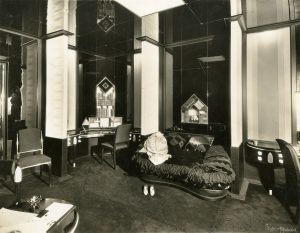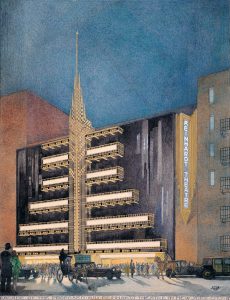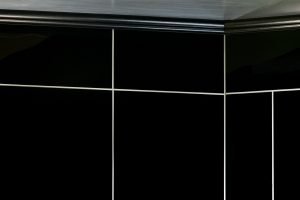Opaque, reflective structural glass, known by the trade names Vitrolite, Sani Onyx and Carrara Glass, was a popular material used in the 1920s. Introduced around the turn of the century, it was available in many colors, had a modern, rich look and was easily cleaned. Urban used black Vitrolite here and in several other interiors including a boudoir titled ‘Repose’ (1929), and for the façade of the proposed Max Reinhardt Theatre (designed 1928, not built).


In the Wormser bedroom, Urban’s use of highly polished black glass, paired with a silvered ceiling and black lacquered woodwork, created a glamorous, modern effect. While creating the illusion of extended space, it also brought vitality to the room through the changing reflection of moving bodies and light.
Because Vitrolite is no longer produced, and the required quantity of salvaged Vitrolite was unavailable, highly polished extruded black acrylic panels that emulate the density, reflectivity and sheen of the original material were used for this recreation of the room.
